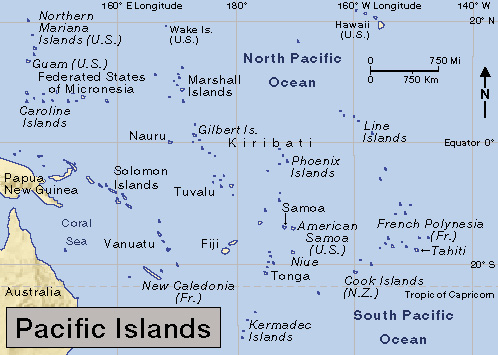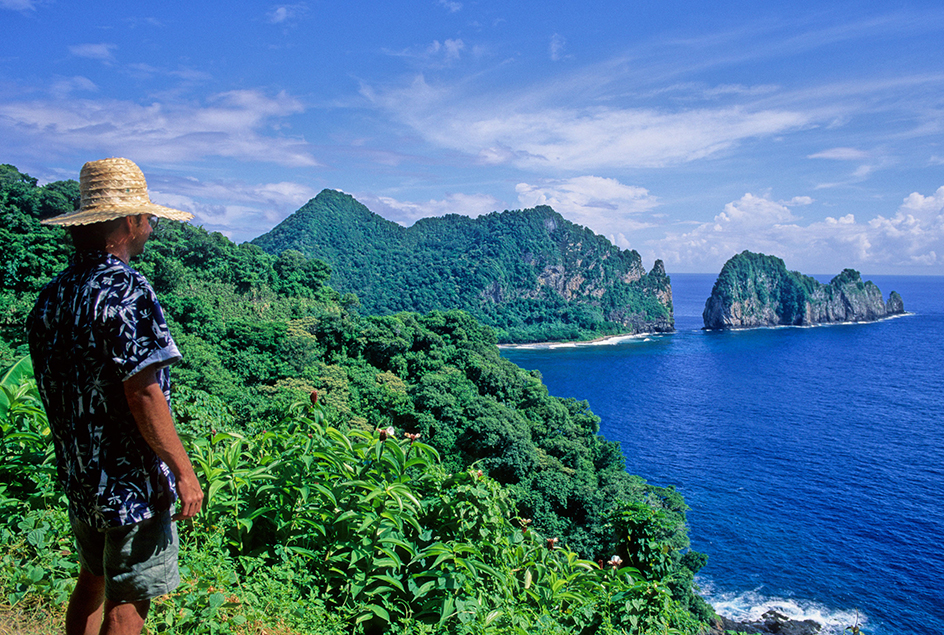Samoa << suh MOH uh >> Islands is a chain of islands in the South Pacific Ocean. This chain was once called the Navigators Islands because of the fine canoes built by the Samoans. The Samoa Islands cover 1,174 square miles (3,040 square kilometers) and have a population of about 255,000. Almost all of the people are Polynesians.

The Samoa Islands are divided into two political units. The eastern islands, which include Tutuila and several smaller islands, are part of American Samoa, a possession of the United States. The United States acquired the islands of American Samoa in stages between 1900 and 1925. The western islands of the chain—which consist of Savai’i, Upolu, and several smaller islands—make up the nation of Samoa. Samoa, formerly called Western Samoa, has been an independent nation since 1962.

Tutuila has the only good harbor in the islands. The United States had a naval base there until 1951.
Nearly all the Samoa Islands are volcanic formations, and coral reefs surround most of them. Rich forests and flatlands slope gently toward the sea. The climate of the islands is hot and rainy.
